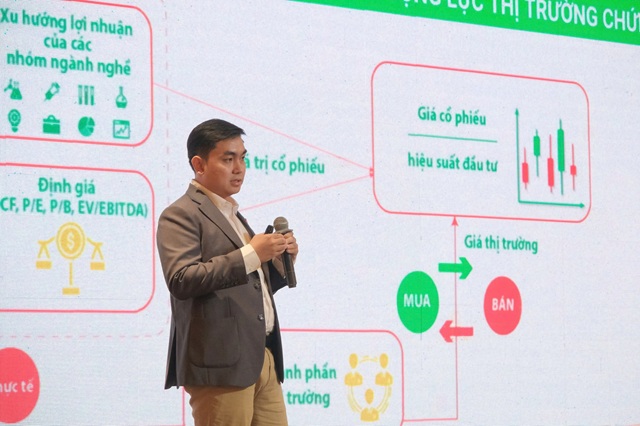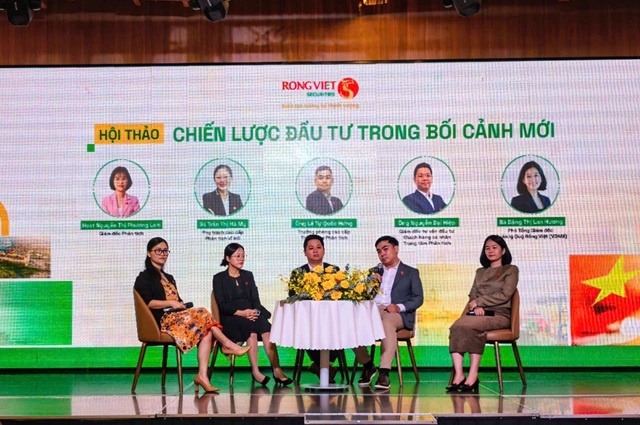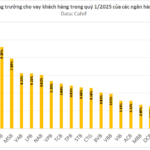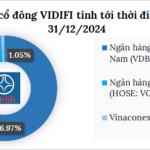
Conference on “Investment Strategies in the New Context” held on the morning of June 14, 2025
|
Mr. Le Tu Quoc Hung, Senior Manager of VDSC Analysis Center, commented that margin debt is currently at an all-time high in terms of absolute figures. However, the VDS analysis team does not consider this level as a cause for concern.
The first reason for this assessment is the healthy growth in debt origin. Investor deposits with securities companies have rebounded. The number of new accounts opened remains at around 300,000 per quarter. Much of the increase in debt comes from new investors entering the market and using margin, which is a healthy increase.
Additionally, the capabilities of securities companies have improved. The ratio of margin debt to equity has not returned to the historical peak of 2021-2022. Many securities companies, especially those backed by banks, have quickly increased their capital, expanding their lending capacity. There is also competition in the market for margin lending rates, keeping borrowing costs low. Borrowers currently have the advantage of low pricing and interest rates. Therefore, those accepting higher risks can utilize financial leverage in this phase to benefit from long-term price increases.
The question then becomes, what level will trigger market risk? According to Mr. Hung, high margin debt will become an issue when the economy faces liquidity stress, as was the case in 2022. This occurs when there is competition for credit in the monetary market, leading to high borrowing rates, forcing margin users to reduce their positions. If this happens simultaneously and within a short period, it will impact market prices.
Other risk factors include political, interest rate, and natural disaster risks. Investors need to constantly monitor these factors to take timely action.

Mr. Le Tu Quoc Hung, Senior Manager of VDSC Analysis Center
|
At the conference, Mr. Hung also presented an overview of the market context, potential investment opportunities, and risks to be aware of in the coming time.
In terms of macroeconomics, 2025 is expected to be a pivotal year with an economic growth target of 8% and reform policies aimed at structural growth.
Short-term risks arise from the tariffs imposed by the Donald Trump administration (on April 2). This factor can directly impact imports and indirectly affect consumption and business investment. Vietnam is one of the countries in official trade talks with the US and has achieved two fundamental elements: negotiation principles and issues to be negotiated. This is expected to ensure that the upcoming trade agreement is transparent, fair, and harmonious for all parties involved.
Currently, the market is trading at a relatively low P/E ratio compared to the past eight years. The profit trend has bottomed out and recovered since the first quarter of 2023, with many businesses surpassing the pre-cheap money phase of 2021-2022. According to Mr. Hung, low valuation, high growth, and economic reform make for an attractive story for foreign investors.
On the other hand, the potential upgrade of the market to a secondary emerging market (FTSE Russell) in the September update is likely, as 100% of the criteria have been met, and Decree 03 has improved the investment environment for foreign investors.
In the short term, Mr. Hung advises investors to be cautious and flexible in their investment choices when facing tariff pressures and psychological impacts. It is important not to hold too tightly to assumptions about a particular investment if new information arises. Identify and keep risks within manageable limits to take early action. During adjustments, there are always sectors that remain unaffected, providing opportunities to seize.
Investors can build their investment strategies based on four ideas. Idea 1 focuses on businesses with growing financial performance and attractive valuations (early expansion phase). This includes sectors such as real estate, which benefits from market recovery and has the potential for revenue and profit growth, and oil and gas service providers, which have low valuations due to psychological factors related to oil prices but are actually entering a growth phase thanks to key infrastructure projects.
Idea 2 targets businesses with stable and sustainable financial performance growth, such as the technology and insurance sectors.
Idea 3 involves stocks with attractive valuations and stable financial performance. This group is suitable for risk-averse investors who prioritize stable cash flow.
Lastly, the fourth idea encompasses sectors that combine all three elements: high growth, multi-year stability, and attractive valuations. Notably, the banking sector fits this bill, as it is crucial for channeling capital in the Vietnamese economy. Annual credit growth significantly contributes to the value and valuation of this sector, making it a worthy inclusion in any investment portfolio.
North Binh Province Aims for Over $200 Billion in Trade
The newly merged province of Bac Ninh, born from the unification of Bac Giang and Bac Ninh, has set its sights on an ambitious future. With a vision for prosperity, the province aims to achieve a remarkable total trade turnover of 212 billion USD, alongside a per capita GRDP of 8,500 USD by 2030. This bold endeavor underscores Bac Ninh’s determination to forge a path of economic growth and development, solidifying its standing on the global stage.
The Highway Expansion Project: Unveiling the Vision for Vietnam’s Future
Vidifi, the leading infrastructure developer, has proposed an ambitious plan to the government for the expansion of 300 kilometers of the North-South Highway in the north through a public-private partnership (PPP). As the mastermind behind the Hanoi-Haiphong Highway, Vidifi faces a cumulative loss of over VND 7,800 billion by the end of 2024.





















